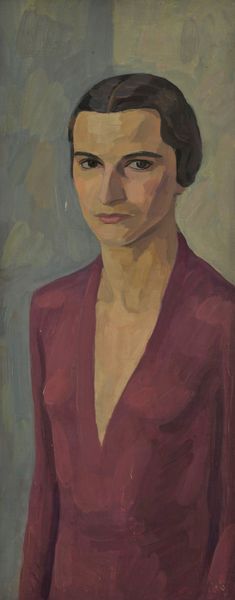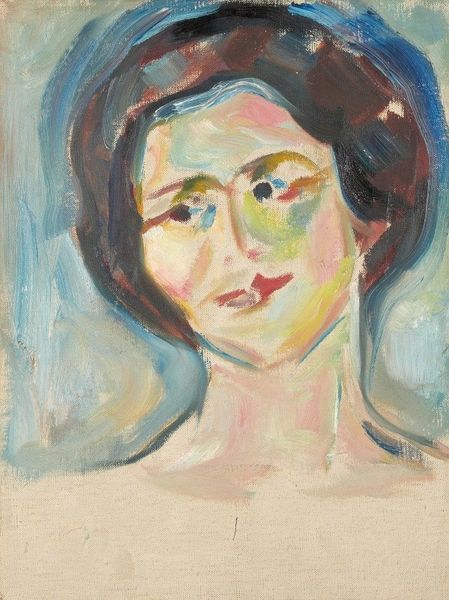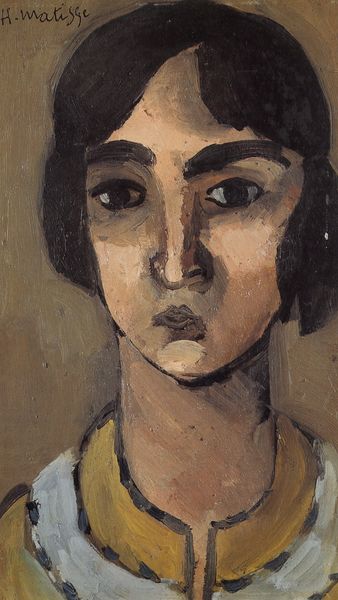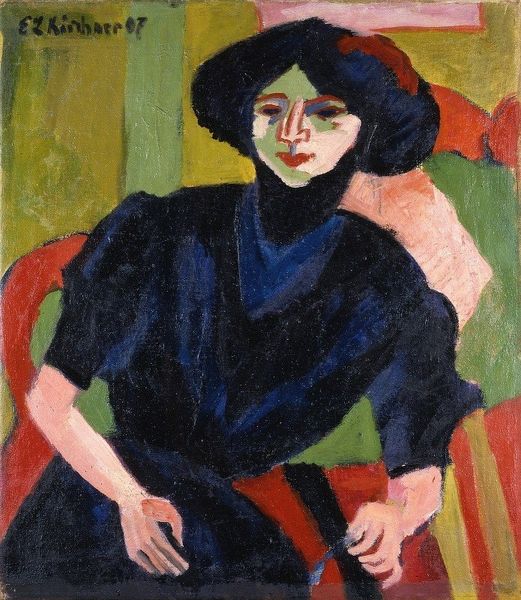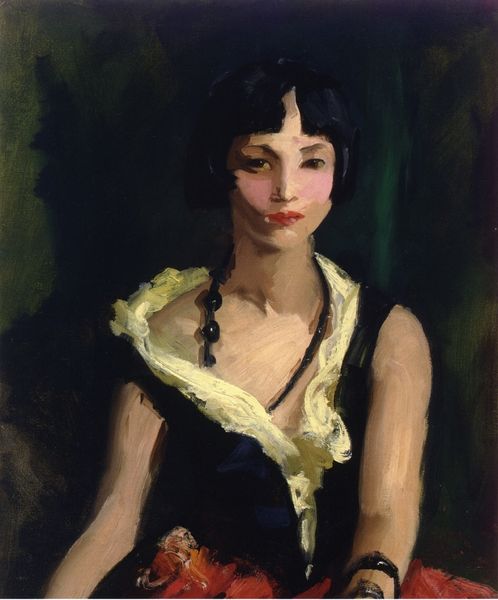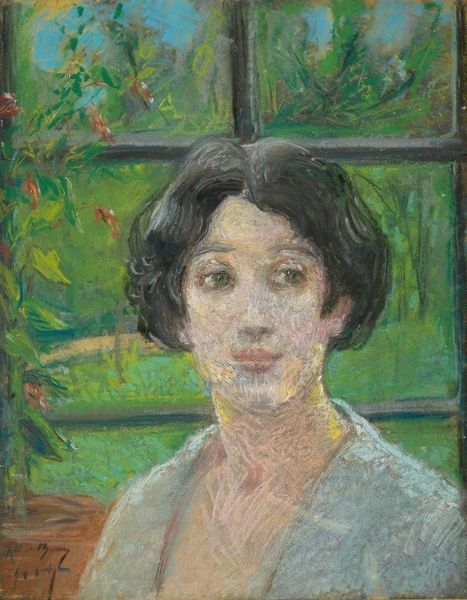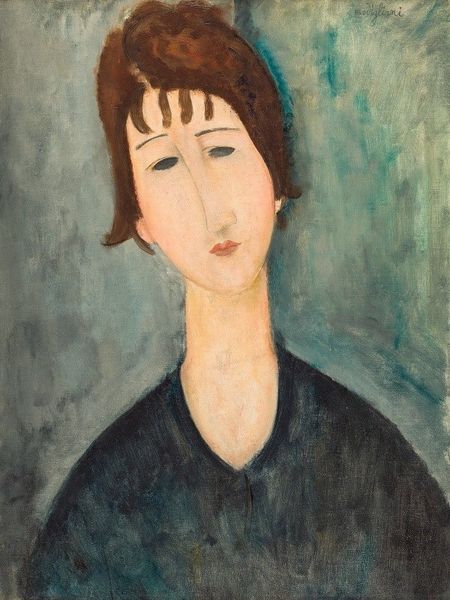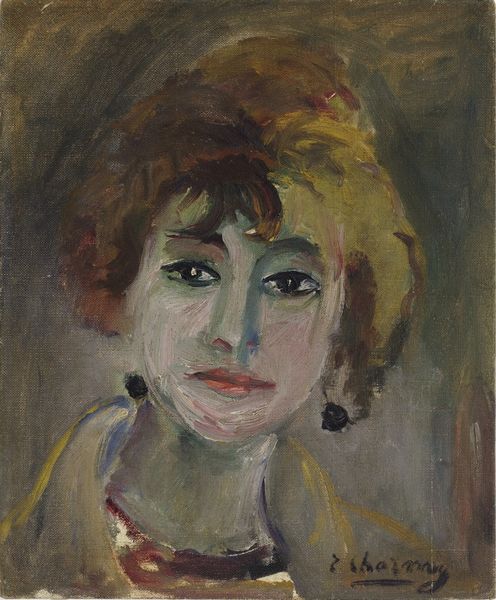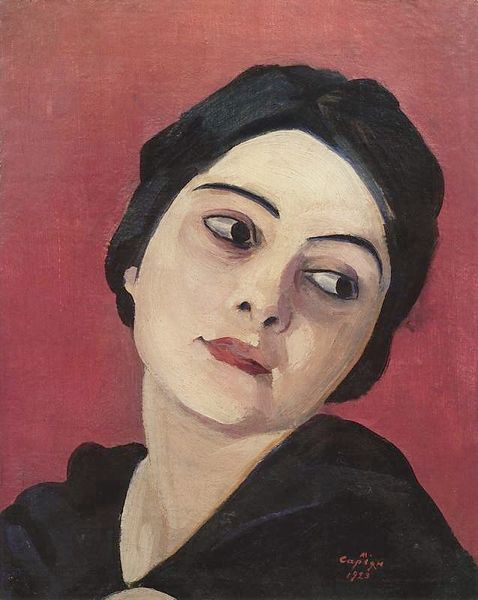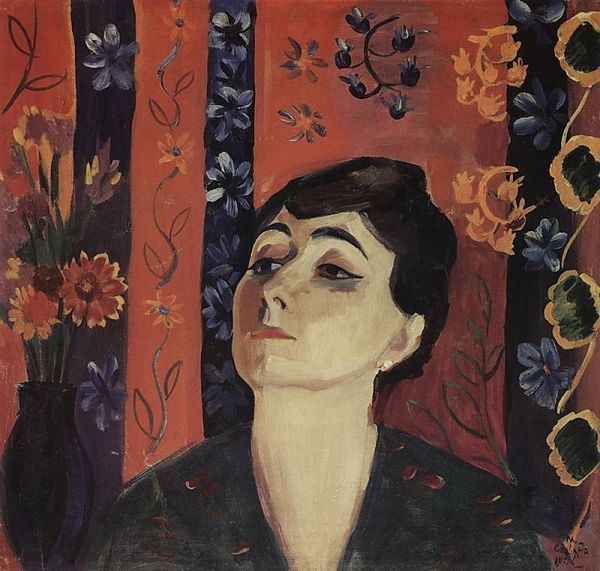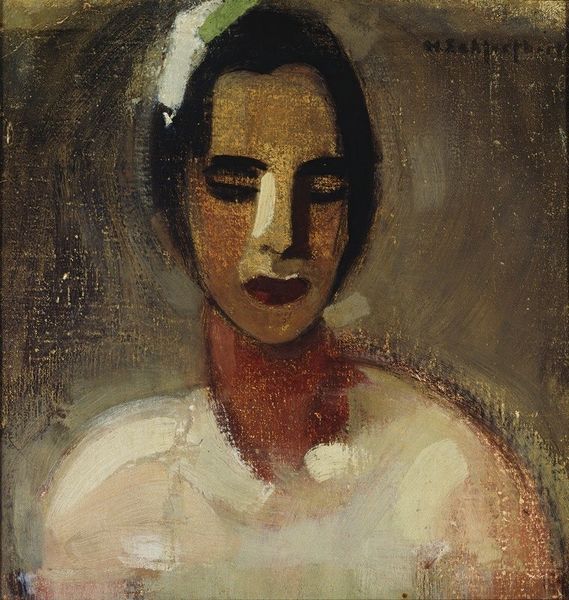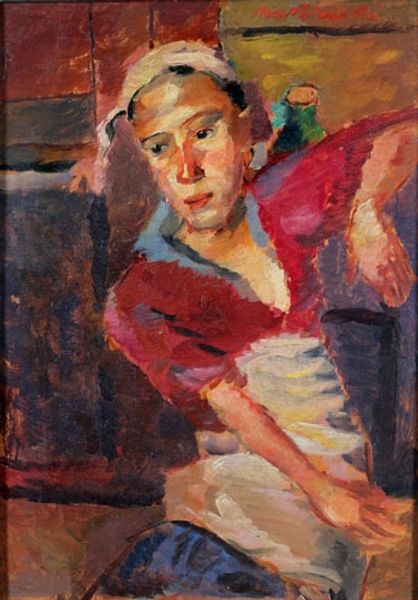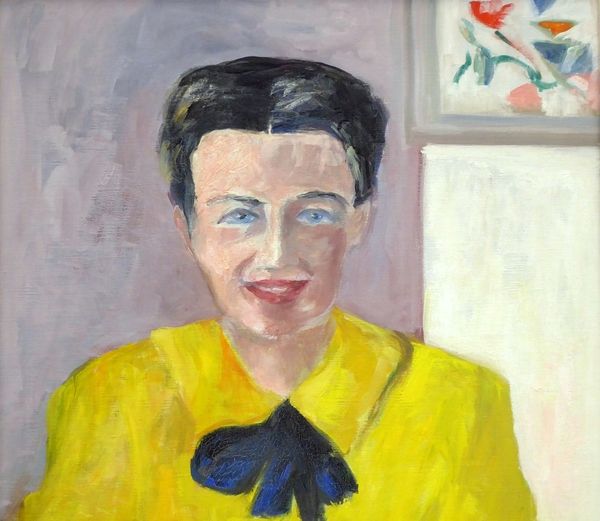
Dimensions: 60 x 45 cm
Copyright: Haroutiun Galentz,Fair Use
Curator: Looking at us today is "Artist Knarik Hovannisyan," a striking oil on canvas completed in 1956 by Haroutiun Galentz. What captures your attention first? Editor: The subdued color palette is really striking. It conveys an introspection and hints at the artist’s personality; it is heavy yet the choice of using an abstract expressionist style, leaves the window open. It is mysterious and revealing all at once. Curator: Exactly! And in this way it departs from academic representations of portraiture of the era, leaning into an interpretation of self. It's worth noting the broader social context. Galentz painted this during a period of complex cultural negotiations within the Soviet Union. Artists often had to navigate the tightrope between personal expression and ideological constraints. How does this resonate with the imagery you see? Editor: Well, consider the sitter's gaze, slightly averted. It's not confrontational, but seems to hold some secrets or quiet introspection. Is this a conscious withdrawal or, possibly, a cultural cue reflecting modesty? We see this kind of imagery repeating throughout time to convey certain symbolic meanings. Curator: That tension between individual agency and prescribed social roles comes through so vividly. You know, expressionism and modernism, broadly, were ways artists expressed these themes in powerful and transformative ways that are relevant to consider even today when we think about female representation. It is quite compelling that he dedicated the artwork to Hovannisyan! Editor: I wonder, what can be interpreted from the color choice? Red in cheeks could be taken to interpret feelings about embarrassment and then again we may consider it as symbolism, of health, the ability to bear a child and bring forward the continuity. Curator: You bring up an essential point, which invites us to engage critically with representation itself. Galentz, a male artist, painting Knarik…How might her own perspective, her own artistic choices, have differed? What symbolisms and representations might she use herself? These are the questions we should engage with. Editor: True, these are important questions to ask in order to have the discussion progress forward and question if our assumptions are being made based on history alone. Considering art's symbolic history and thinking of where it goes beyond the artwork’s initial message is fascinating. Curator: It is about seeing the dialogue of past and present—between artist and sitter and of cultural impact that leaves an enduring trace. Editor: Indeed. What seems like a singular piece then grows into complex network of symbolisms and reflection that connect the dots of visual interpretations.
Comments
No comments
Be the first to comment and join the conversation on the ultimate creative platform.
